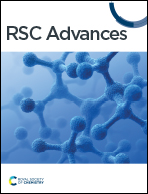Nitrogen-doped carbon material NCM-T heterogeneously catalyzed liquid-phase hydrogenation of nitrobenzene to aniline
Abstract
As an important chemical intermediate, aniline is primarily produced industrially through catalytic hydrogenation of nitrobenzene. Herein, a series of nitrogen-doped carbon materials (referred to as NCM-T, with T denoting the roasting temperature (°C)) were prepared through high-temperature roasting of sucrose and melamine for the heterogeneous catalytic liquid-phase hydrogenation of nitrobenzene to aniline. A preliminary study of the involved reaction mechanism was performed by combining the results of material characterisation and catalyst evaluation. Experimental results showed that the graphitic N content and the defective sites simultaneously affected the performance of NCM-T in catalysing the hydrazine hydrate reduction in the nitrobenzene hydrogenation reaction. The catalyst NCM-800 was reacted in an ethanol solution with hydrazine hydrate as the reducing agent at 80 °C for 5 h. Notably, the nitrobenzene conversion rate was up to 94%, and the aniline selectivity was 100%. The turnover frequency (TOF) could reach up to 7.9 mol g−1 h−1, and after five recycling cycles, only a small loss of catalytic activity was observed. This shows that the prepared catalyst is a recyclable catalyst that can be used for reducing the nitrobenzene from hydrazine hydrate to aniline.



 Please wait while we load your content...
Please wait while we load your content...